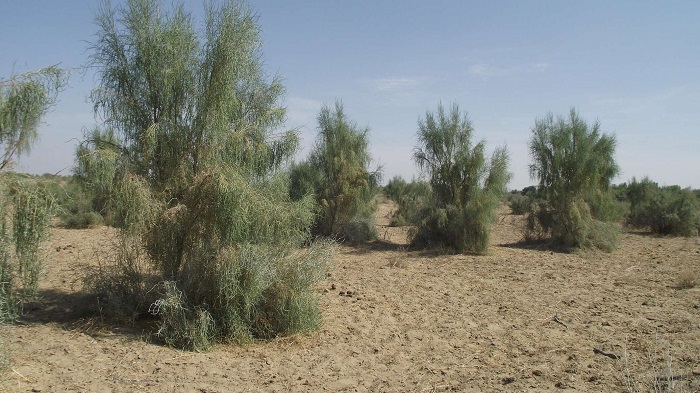nCa Report
CADI – Central Asia Desert Initiative – was a project involving several countries and organizations. It lasted from July 2016 to July 2022, stretching beyond its planned period of implementation.
CADI studied the deserts of Central Asia from different perspectives and gave valuable insight.
Here is the text of the brochure of the project:
Conservation and sustainable use of cold winter deserts
PROJECT MANAGEMENT – University of Greifswald, Germany
IMPLEMENTING PARTNERS – Michael Succow Foundation, Greifswald, Germany, Food and Agriculture Organization of the United, Nations (FAO), Sub-regional Office for Central Asia,
Ankara, Türkiye
PARTNERS IN CENTRAL ASIA – Kazakhstan (Committee on Forestry and Wildlife of the Ministry of Agriculture, Astana), (Association for the Conservation of Biodiversity in Kazakhstan (ACBK), Astana); Turkmenistan (State Committee of Turkmenistan for Environmental Protection and Land Resources, Ashgabat), (National Institute of Deserts, Flora and Fauna, Ashgabat); Uzbekistan (State Committee on Forestry of the Republic of Uzbekistan, Tashkent); FAO office in Uzbekistan, Tashkent
Head of the project: Dr. Michael Manthey – manthey@uni-greifswald.de
Project Coordination: Christian Welscher – christian.welscher@uni-greifswald.de,
Project title: Central Asian Desert Initiative (CADI) – Conservation and sustainable use of cold winter deserts
Target countries: Kazakhstan, Turkmenistan, Uzbekistan, with components in China, Iran, Mongolia
Duration: 2016–2019 (3.5 years)
Supporting grant: 3,280,963 €
This project is part of the International Climate Initiative (IKI). The Federal Ministry for the Environment, Nature Conservation, Building and Nuclear Safety (BMUB) supports this initiative on the basis of a decision adopted by the German Bundestag.
What are cold winter deserts?
Cold winter deserts – also referred to as temperate deserts – are continental deserts, whose aridity is explained by its distance to oceans or their locality in the rain shadow of larger mountain ridges. They are characterized by a distinct seasonal climate, with strong long-lasting frost in winter and extreme heat in summer. During the year precipitation is below 100 mm and the temperature may fluctuate between -45°C and 50°C. 95 percent of cold winter deserts are located in Central Asia. Comparably small areas are to be found in the Great Basin of North America and in parts of Patagonia in South America.
CADI work packages
The CADI project consists of four work packages with the following expected results:
I. Capacity building and dissemination of knowledge on biodiversity, ecosystem services, conservation status and land-use in temperate deserts
• Implementation of a fellowship programme for senior researchers from Central Asia
• Strategy for a spatial prioritization of expanded nature conservation of the desert biome
• Establishment of a virtual herbarium and “e-flora” of Central Asian plant diversity
• Publication of a monitoring manual of desert biodiversity and communication material promoting protection and sustainable use of temperate deserts
II. Sustainable land management in desert biomes in the target countries
• Development and dissemination of complete background information on land-use and vulnerability in pilot areas
• Establishment of Farmer Field Schools (FFS) for sustainable land use management in pilot sites
• Registration of a Nationally Appropriate Mitigation Actions Project Idea Note (NAMA PIN) for the Agriculture, Forestry, and Other Land Use (AFOLU) sector in Uzbekistan
III. Improving management and establishment of protected areas in the desert biome
• Training of staff in two desert protected areas targeted by the project
• Submission of proposals for the establishment or enlargement of desert protected areas
• Development and submission of a nomination for status as a UNESCO World Heritage site
IV. Strengthening of regional cooperation for the protection and sustainable use of temperate deserts
• Establishment of a CADI interim secretariat
• Organization of side events on CADI at sessions of relevant UN Conventions
• Introduction of CADI during conferences in Iran, China and Mongolia
Why CADI?
The Eurasian cold winter – or temperate – deserts, spreading from northern Iran across Central Asia to Mongolia – are globally outstanding nature regions. They are an important migration area for birds and the last wild herds of ungulates, such as the Saiga antelope. The enormous land masses deliver a broad range of ecosystem services. These include important pasture grounds in the region’s arid and semi-arid drylands, fixing sediments and thus mitigating desertification processes as well as sequestering carbon.
Despite their ecological importance, temperate deserts are, according to a study by the International Union for Conservation of Nature (IUCN), one of the least recognized biomes worldwide. The temperate deserts are the only biome worldwide for which the UNESCO has not yet inscribed a World Natural Heritage site. Likewise, areas with nature conservation status in these deserts are clearly under-represented and insufficiently managed.
Yet, the Eurasian temperate deserts are threatened by degradation processes due to verexploitation of natural resources, inappropriate grazing practice, and large-scale infrastructure development. Signs of irreversible loss of habitats and species, some of them endemic and globally threatened, are becoming apparent. This detracts from a solid and healthy natural basis for human welfare in the whole region.
CADI project goals
The Central Asian Desert Initiative (CADI) aims to preserve the biodiversity and ecosystem services of the Eurasian temperate deserts in Central Asia.
The main CADI target countries are Kazakhstan, Turkmenistan and Uzbekistan, which carry a high responsibility for preserving this biome. CADI also supports these countries in meeting their commitments under key international conventions, and initiating and implementing measures for coordinated transboundary protection of the desert biome. /// nCa, 9 May 2024 [to be continued]
